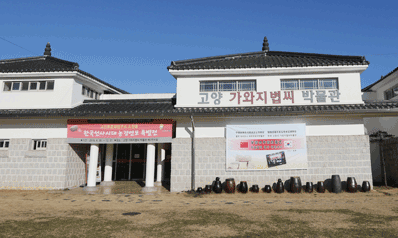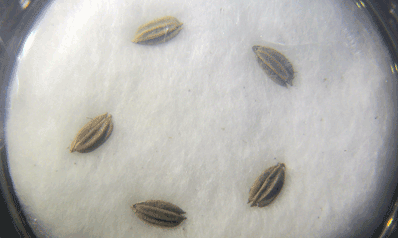Cultural heritage in Goyang
five-thousand years history
Current story of Goyang
“ The firstly cultivated rice seed in Korean Peninsula ”

What are you reminded of with relics? You all may come up with earthenware, knife, sculpture, or others. You might as well come up with museums that preserve such relics.
. Then, what is the smallest relic in the world? May be the knife used by ancestors long time ago? Smaller relics might include plate particles. However, there are relics that are even smaller than them. What are they? It is ‘rice seed’ that is sown on the field to cultivate rice.
“Hey, rice seed is not a relic.”
There might be people who say like this. However, rice seed is a relic that shows the lifestyle and history of ancestors, and there are museums built to preserve this rice seed. It is the ‘Kawajiwa Rice Seed Museum’ located in Goyang-si, Deokhyang-gu.
As shown in the name, there is ‘Kawaji rice seed’ at ‘Kawaji Rice Seed Museum.’ Found in Kawaji village in Goyang-si, it is called as ‘Kawaji rice seed.’ What is so special about this rice seed that museums were built to preserve them? As for relics and remaining, the historical meaning and value are more important than themselves. Seen this this perspective, Kawaji rice seed is a very important relic. Surprisingly, Kawaji rice seed was a cultivating rice seed used 500 years ago. What cultivating rice seed means is artificially cultivated rice seed for farming.

In other words, Kawaji rice seed is a proof that our ancestors farmed rice more than 5000 years ago. So to speak, Korea Peninsula already had farming culture settled about more than 5000 years ago.
Hereupon, Goyang-si has built museums to preserve Kawaji rice seed that is full of information about the beginning of farming culture and commemorate its historical value. When visiting Kawaji Rice Seed Museum, it is possible to obtain information about Kawaji rice seed as well as course of cultivation of it and research results or articles about Kawaji rice seed from many of the presses in the past. Furthermore, people are able to experience large mortar or milestone in the museum.
How about visiting Kawaji Rice Seed Museum with families or friends to see Kawaji rice seed as a cornerstone of farming culture in Korea?
Meaning of Kawaji
It means a ‘large Korean tile-roofed house’ as the name of the village in Daehwa-dong and Songpo-dong in the past.
Story of cultivating Kawaji rice seed
As the plan for developing Ilsan new city was released, professor, Bogi Son, in Yonsei University who was well-known as an archaeologist at that time, was appointed as a director to organize four investigation teams with about 60 members starting to investigate earth surface. The first excavation investigation was completed without achieving much of the accomplishment, and investigation teams faced huge risk. However, after persuading the importance of history and excavation to business holders, they were able to proceed the second investigation and ended up achieving the great accomplishment of Kawaji rice seed as well as relics in prehistoric times. Investigation was made in three areas. Especially, Kawaji village on the lower Han River was located in advantage for farming. Therefore, they were able to find many of the relics in Bronze Age such as rice seed, earthenware, wheel, or arrowhead.